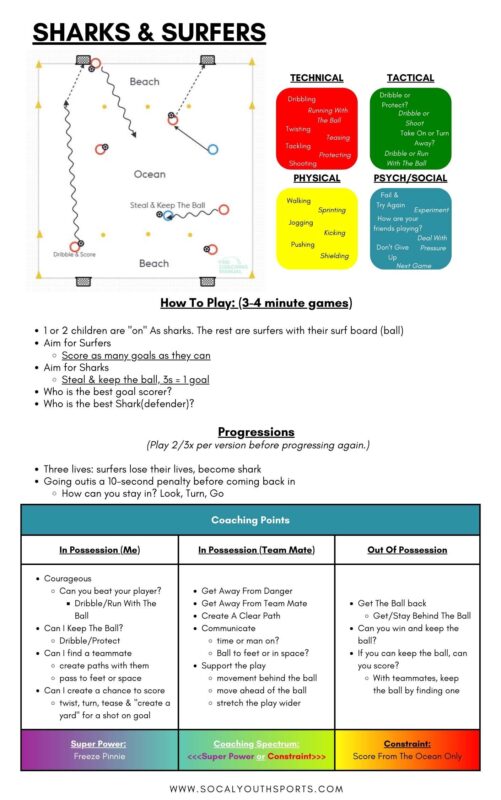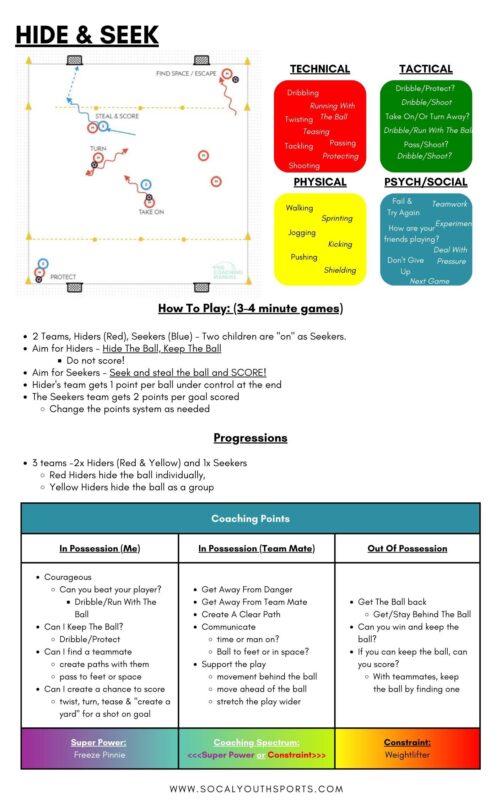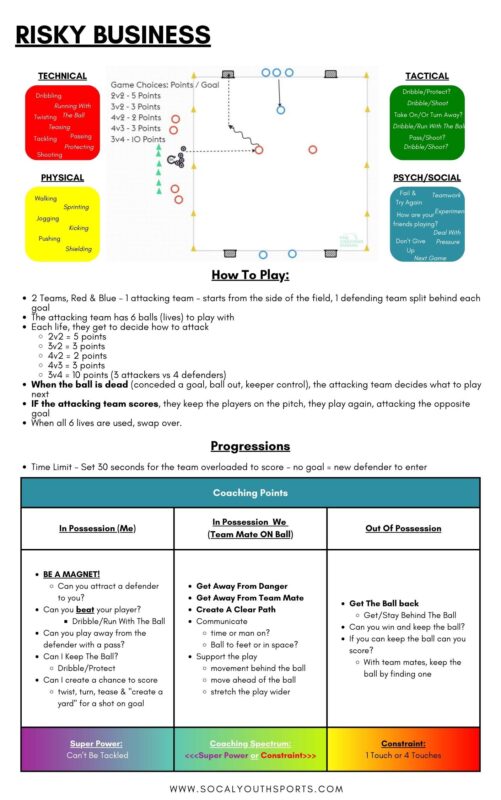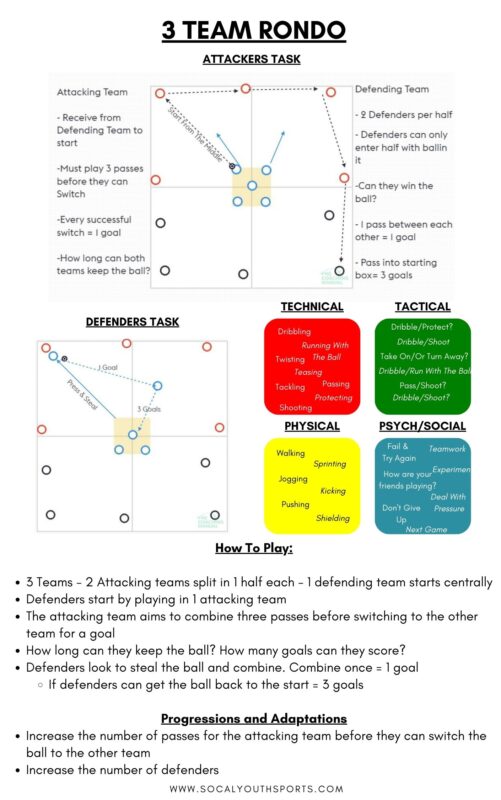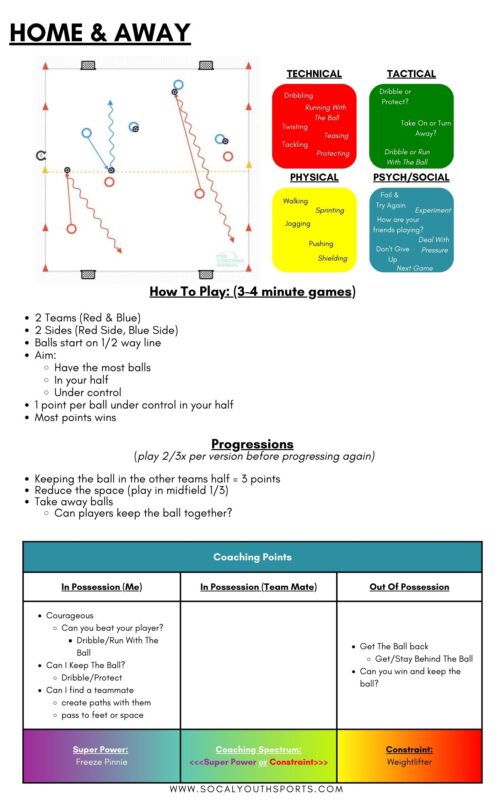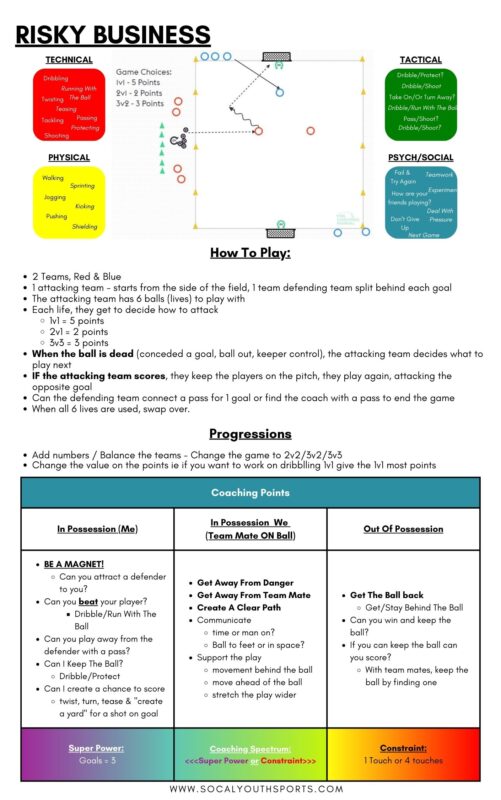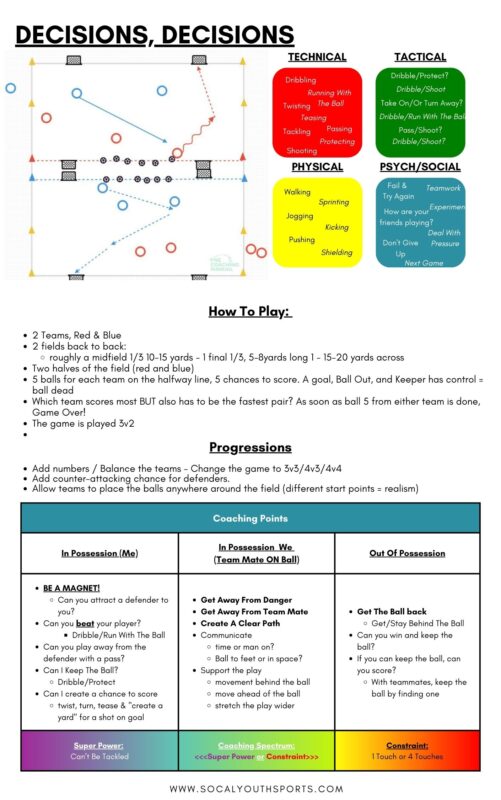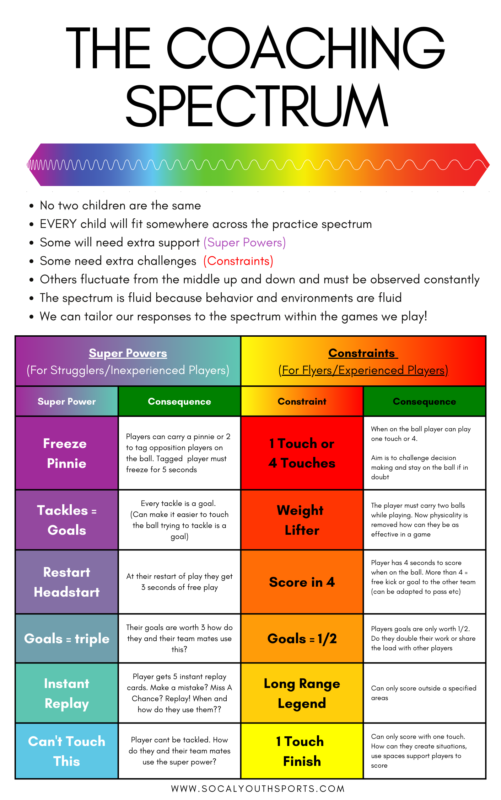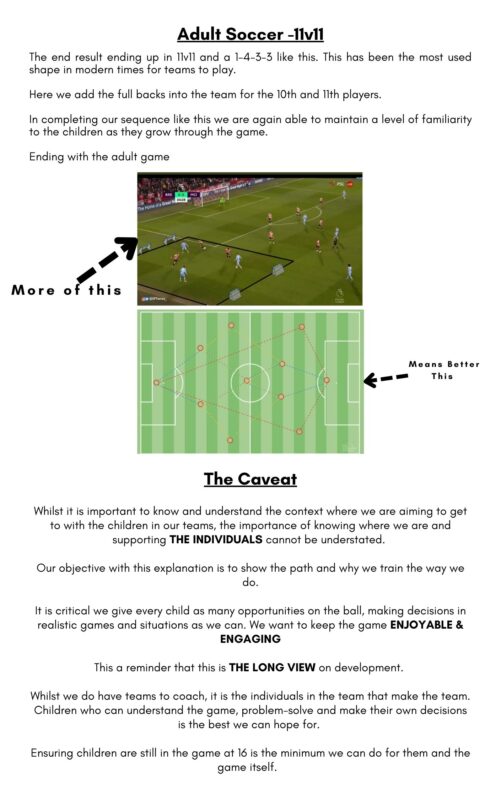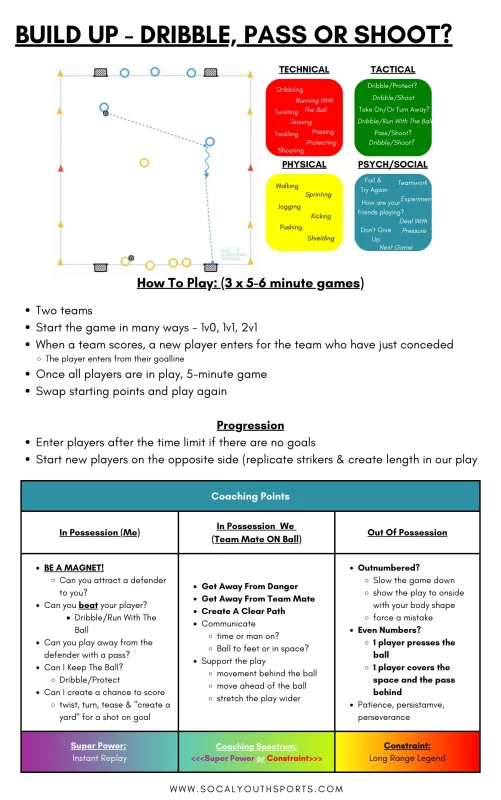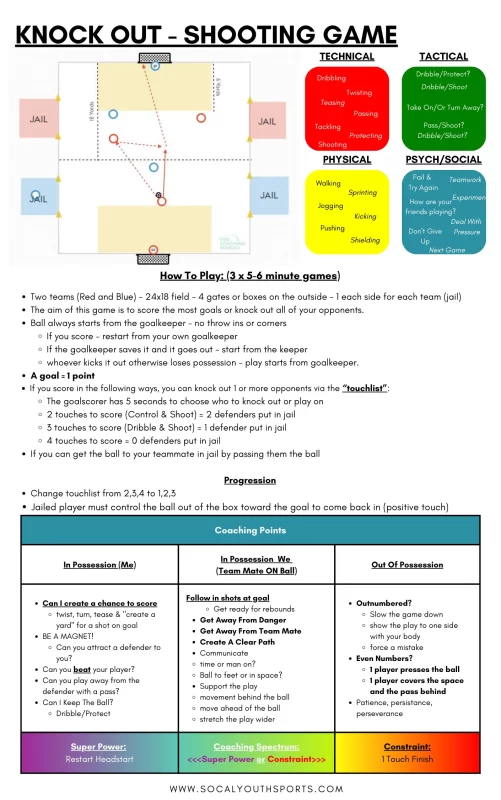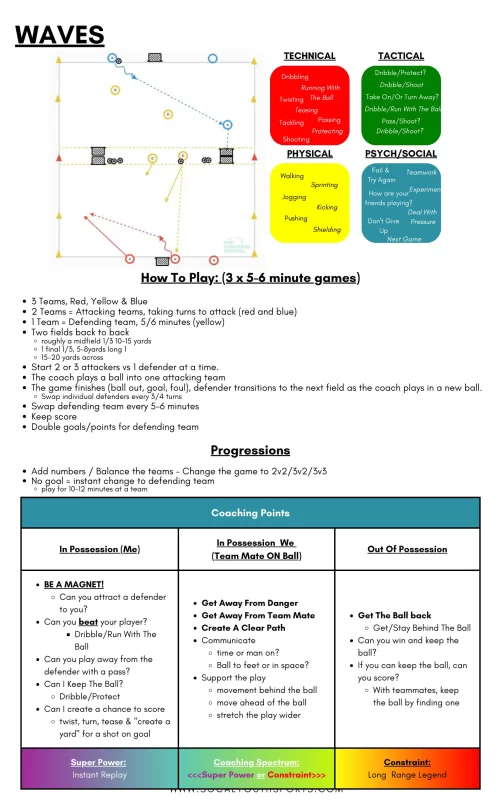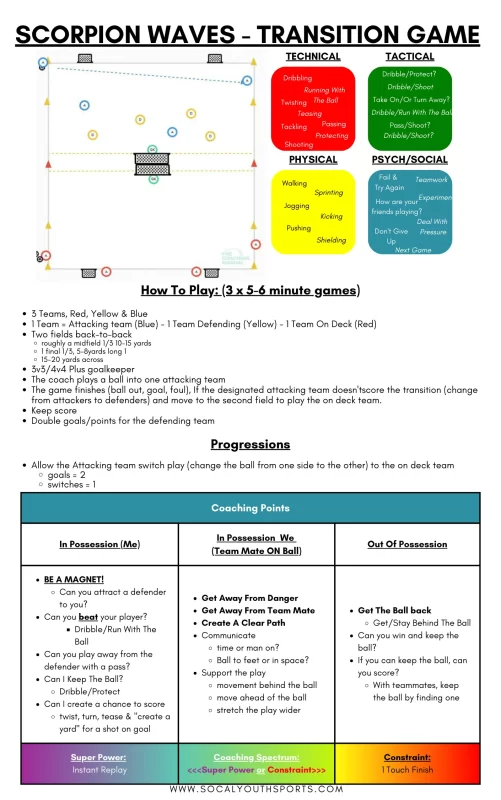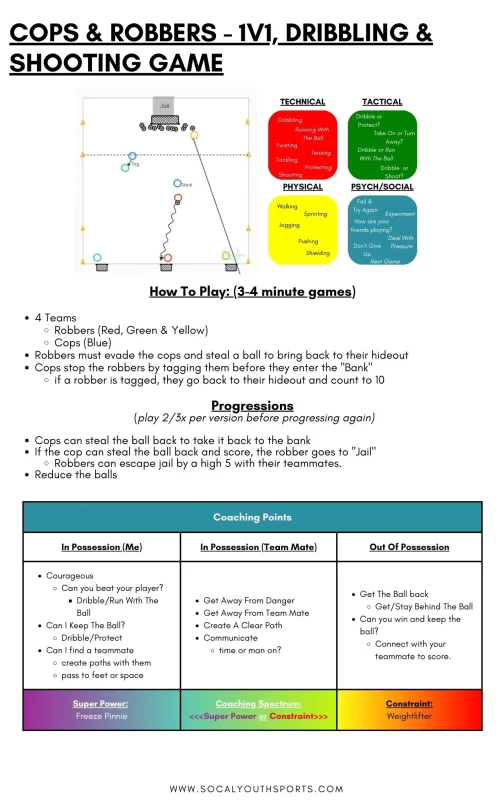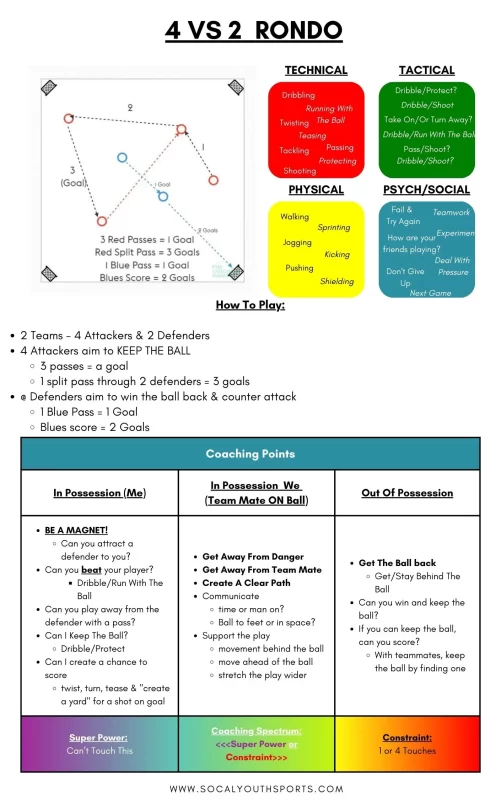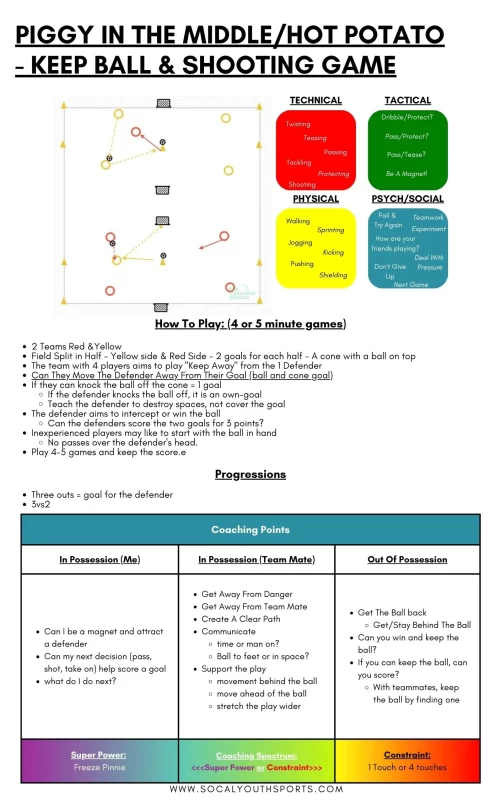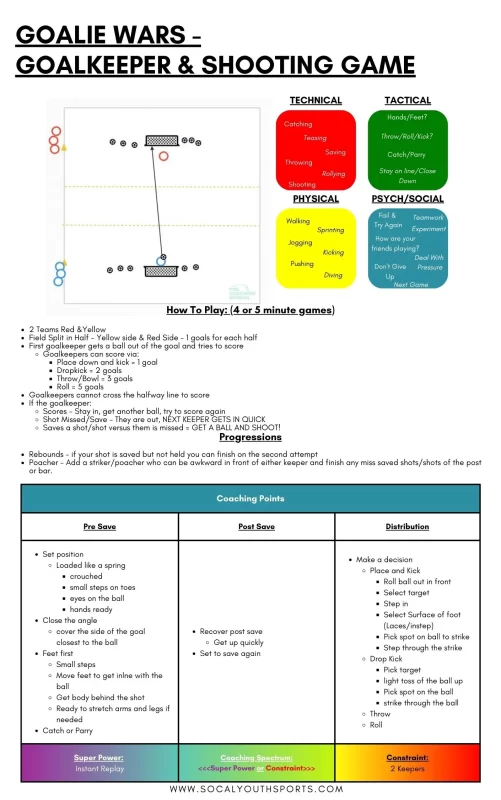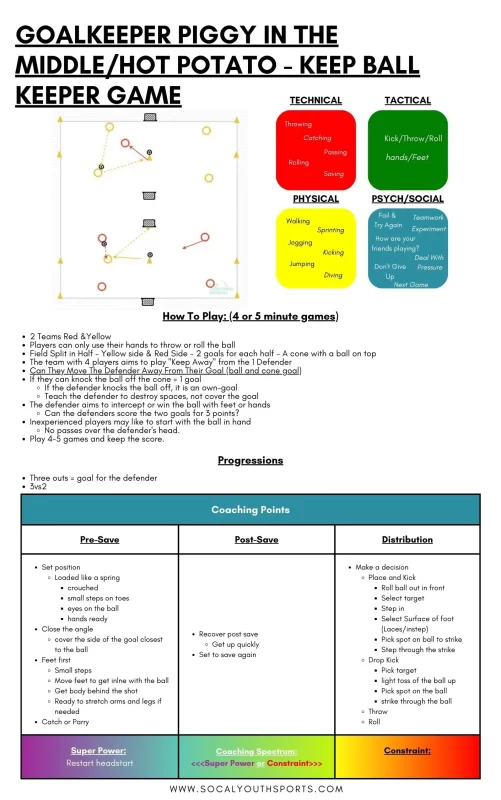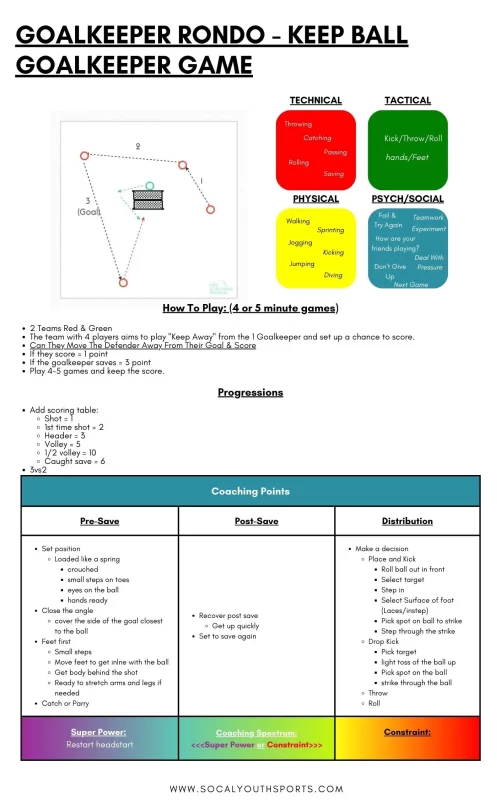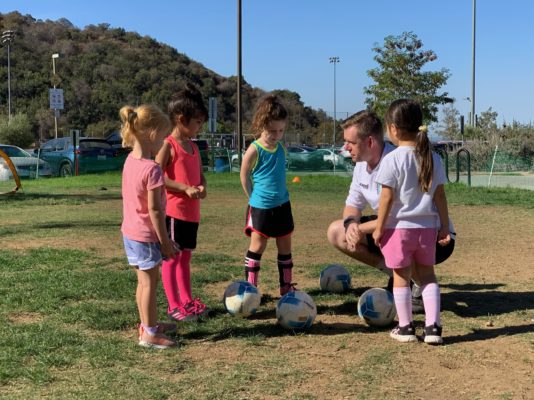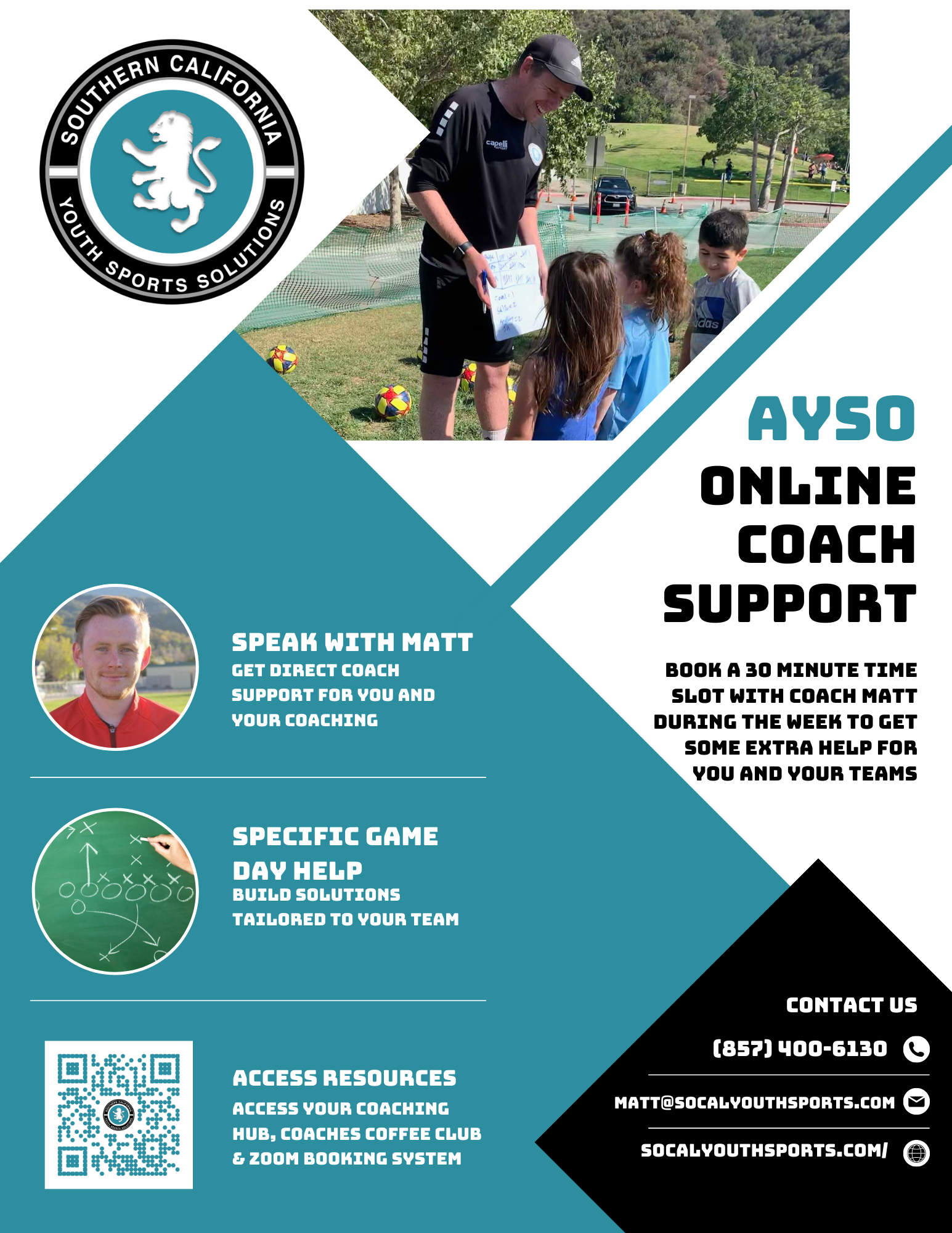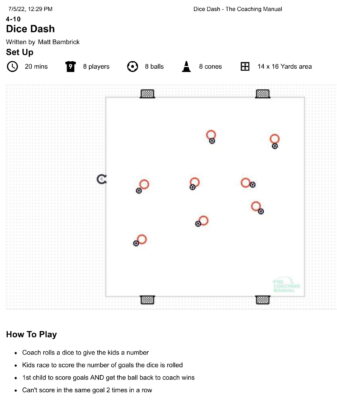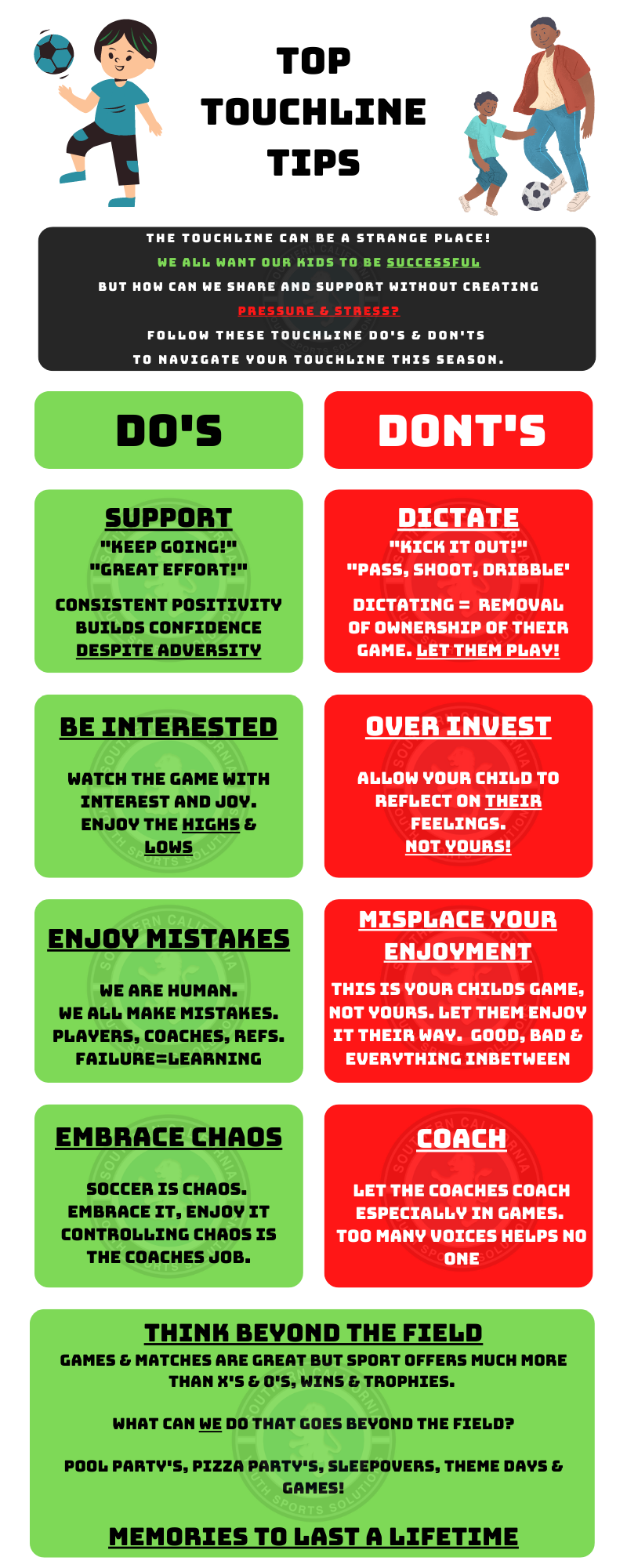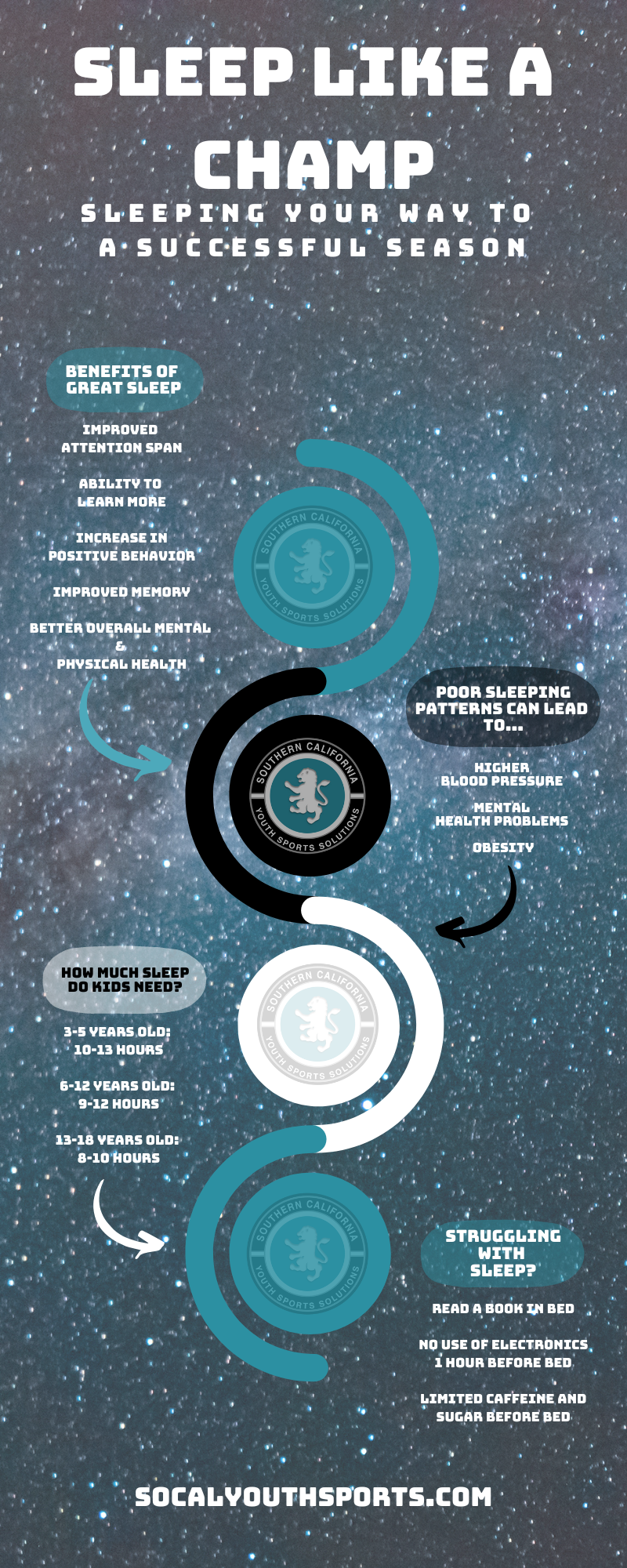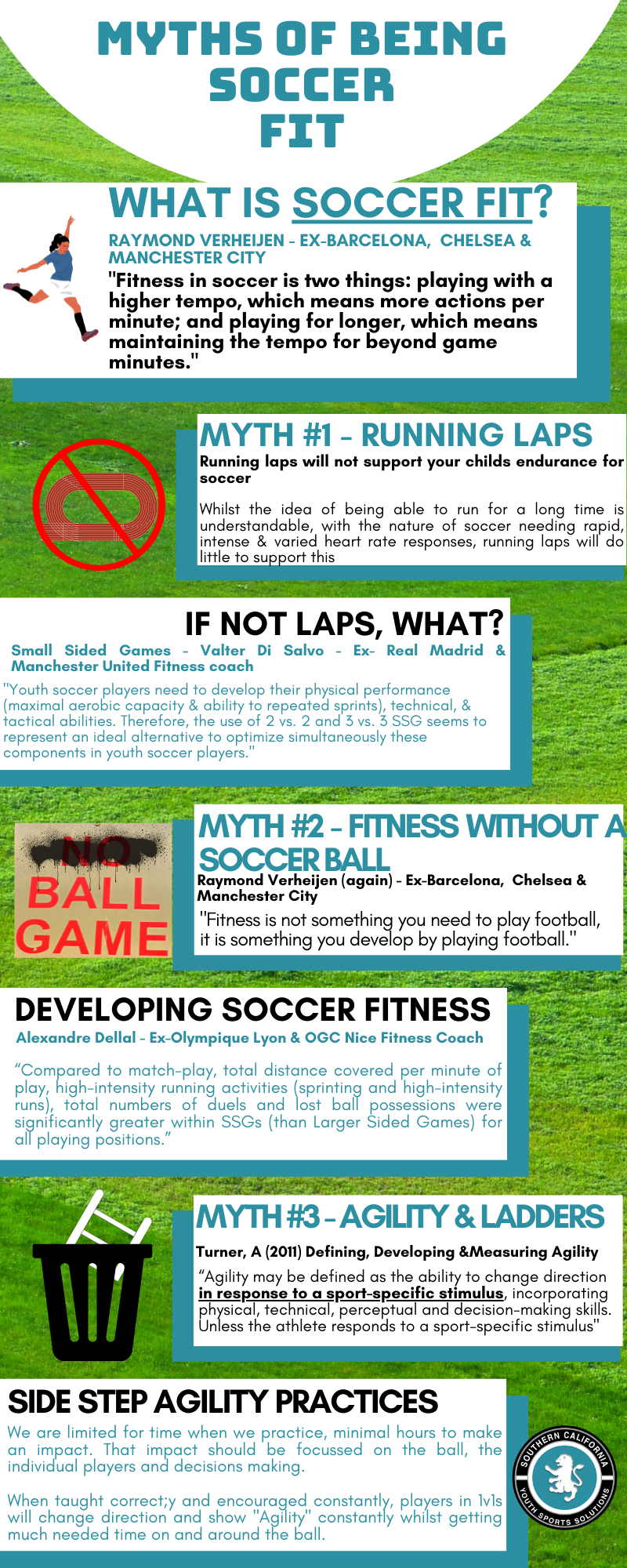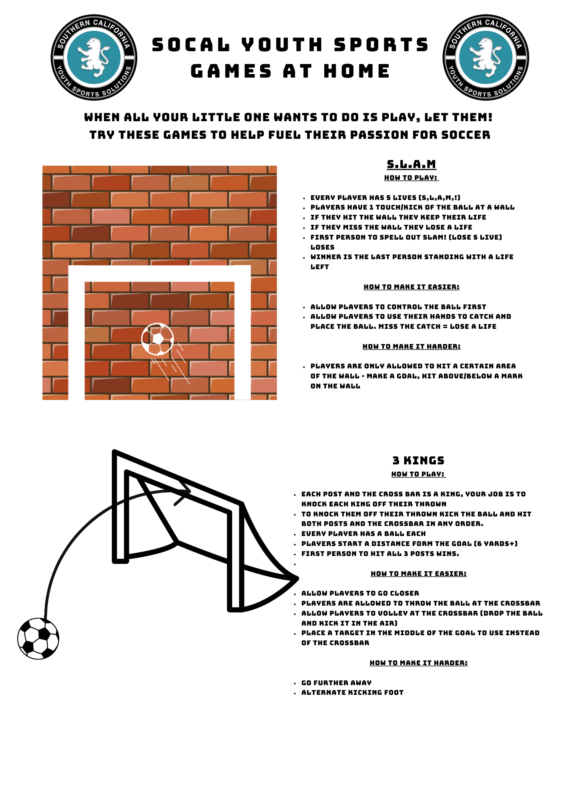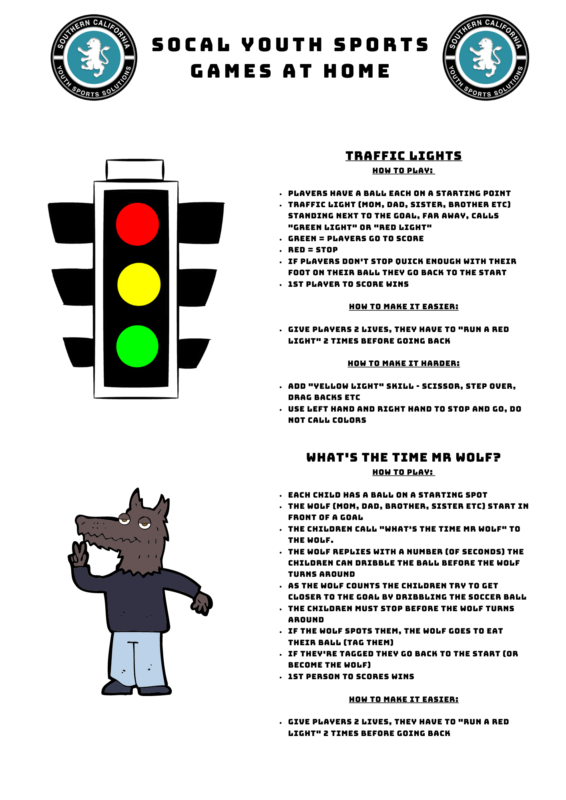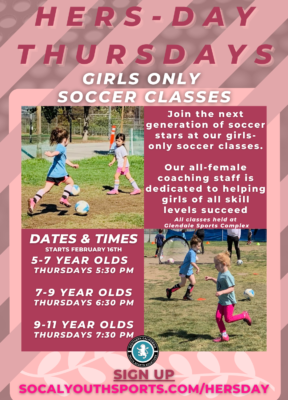Being Soccer Fit
What is soccer fit?
“Fitness in soccer is two things: playing with a higher tempo, which means more actions per minute; and playing for longer, which means maintaining the tempo for beyond game minutes.”
Raymond Verheijen – Ex-Barcelona, Chelsea & Manchester City
MYTH #1 – RUNNING LAPS
Running laps will not support your childs endurance for soccer
Whilst the idea of being able to run for a long time is understandable, with the nature of soccer needing rapid, intense & varied heart rate responses, running laps will do little to support this
IF NOT LAPS, WHAT?
“Youth soccer players need to develop their physical performance (maximal aerobic capacity & ability to repeated sprints), technical, & tactical abilities. Therefore, the use of 2 vs. 2 and 3 vs. 3 SSG seems to represent an ideal alternative to optimize simultaneously these components in youth soccer players.”
Small Sided Games – Valter Di Salvo – Ex- Real Madrid & Manchester United Fitness coach – Study of SSG vs LSG (Large Sided Games)
MYTH #2 – FITNESS WITHOUT A SOCCER BALL
“Fitness is not something you need to play football, it is something you develop by playing football.”
Raymond Verheijen (again) – Ex-Barcelona, Chelsea & Manchester City
Developing Soccer Fitness
“Compared to match-play, total distance covered per minute of play, high-intensity running activities (sprinting and high-intensity runs), total numbers of duels and lost ball possessions were significantly greater within SSGs (than Larger Sided Games) for all playing positions.”
Alexandre Dellal – Ex-Olympique Lyon & OGC Nice Fitness Coach
MYTH #3 – Agility & ladders
“Agility may be defined as the ability to change direction in response to a sport-specific stimulus, incorporating physical, technical, perceptual and decision-making skills. Unless the athlete responds to a sport-specific stimulus”
Turner, A (2011) Defining, Developing & Measuring Agility
Side step agility practices
We are limited for time when we practice, minimal hours to make an impact. That impact should be focused on the ball, the individual players and decisions making.
When taught correctly and encouraged constantly, players in 1v1s will change direction and show “Agility” constantly whilst getting much needed time on and around the ball.
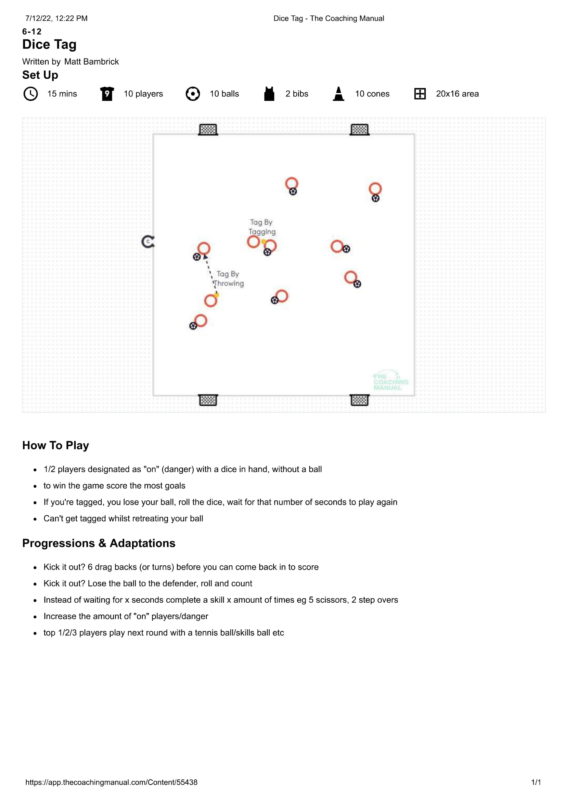
 Parent Soccer Coaches Hub
Parent Soccer Coaches Hub